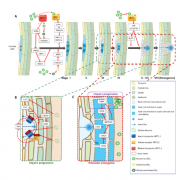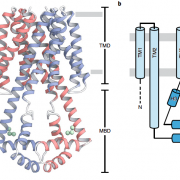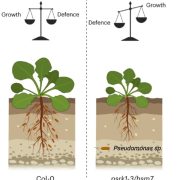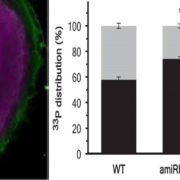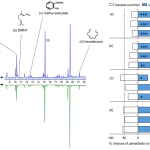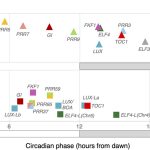Root acid phosphatases and rhizobacteria synergistically enhance white lupin and rice phosphorus acquisition (Plant Physiol)
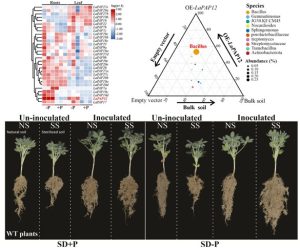 Phosphorus (P, Pi in the form of inorganic orthophosphate) is crucial for plant homeostasis because it is a plant growth-limiting factor. White lupin is an excellent crop model to study Pi changes due to the development of cluster roots (CR). CR are composed of rootlets that allow a more efficient Pi mobilization and uptake due to the increased presence of acid phosphatases (APases). The rhizosheath, the soil area adhering to the roots, is where APases are released, where most associations between roots and the microbial community occur, and is critical for tolerance to abiotic stresses such as drought and P scarcity. In this work, Aslam et al. identified the induction of a gene encoding Purple Acid Phosphatase 12 (LaPAP12), under P deficiency in white lupin. In knock-down or overexpression lines of white lupin or rice, rhizosheath formation was correlated with LaPAP12 expression level, and elevated expression was also correlated with increased abundance of Bacillus bacteria in the rhizosheath-associated microbiome. One of these, B. megaterium, is a phosphate-mobilizing, auxin-producing bacterium that promotes P-acquisition in rice and lupin, particularly under dry-soil and low-P conditions. In conclusion, the authors determined the existence of a bacterial community in white lupin rhizosheath associated with expression of LaPAP12 gene and Pi acquisition. This work improves the understanding of how bacterial communities and APase secretion are involved in P acquisition. (Summary by Eva Maria Gomez Alvarez, @eva_ga96). Plant Physiol. 10.1093/plphys/kiac418
Phosphorus (P, Pi in the form of inorganic orthophosphate) is crucial for plant homeostasis because it is a plant growth-limiting factor. White lupin is an excellent crop model to study Pi changes due to the development of cluster roots (CR). CR are composed of rootlets that allow a more efficient Pi mobilization and uptake due to the increased presence of acid phosphatases (APases). The rhizosheath, the soil area adhering to the roots, is where APases are released, where most associations between roots and the microbial community occur, and is critical for tolerance to abiotic stresses such as drought and P scarcity. In this work, Aslam et al. identified the induction of a gene encoding Purple Acid Phosphatase 12 (LaPAP12), under P deficiency in white lupin. In knock-down or overexpression lines of white lupin or rice, rhizosheath formation was correlated with LaPAP12 expression level, and elevated expression was also correlated with increased abundance of Bacillus bacteria in the rhizosheath-associated microbiome. One of these, B. megaterium, is a phosphate-mobilizing, auxin-producing bacterium that promotes P-acquisition in rice and lupin, particularly under dry-soil and low-P conditions. In conclusion, the authors determined the existence of a bacterial community in white lupin rhizosheath associated with expression of LaPAP12 gene and Pi acquisition. This work improves the understanding of how bacterial communities and APase secretion are involved in P acquisition. (Summary by Eva Maria Gomez Alvarez, @eva_ga96). Plant Physiol. 10.1093/plphys/kiac418


